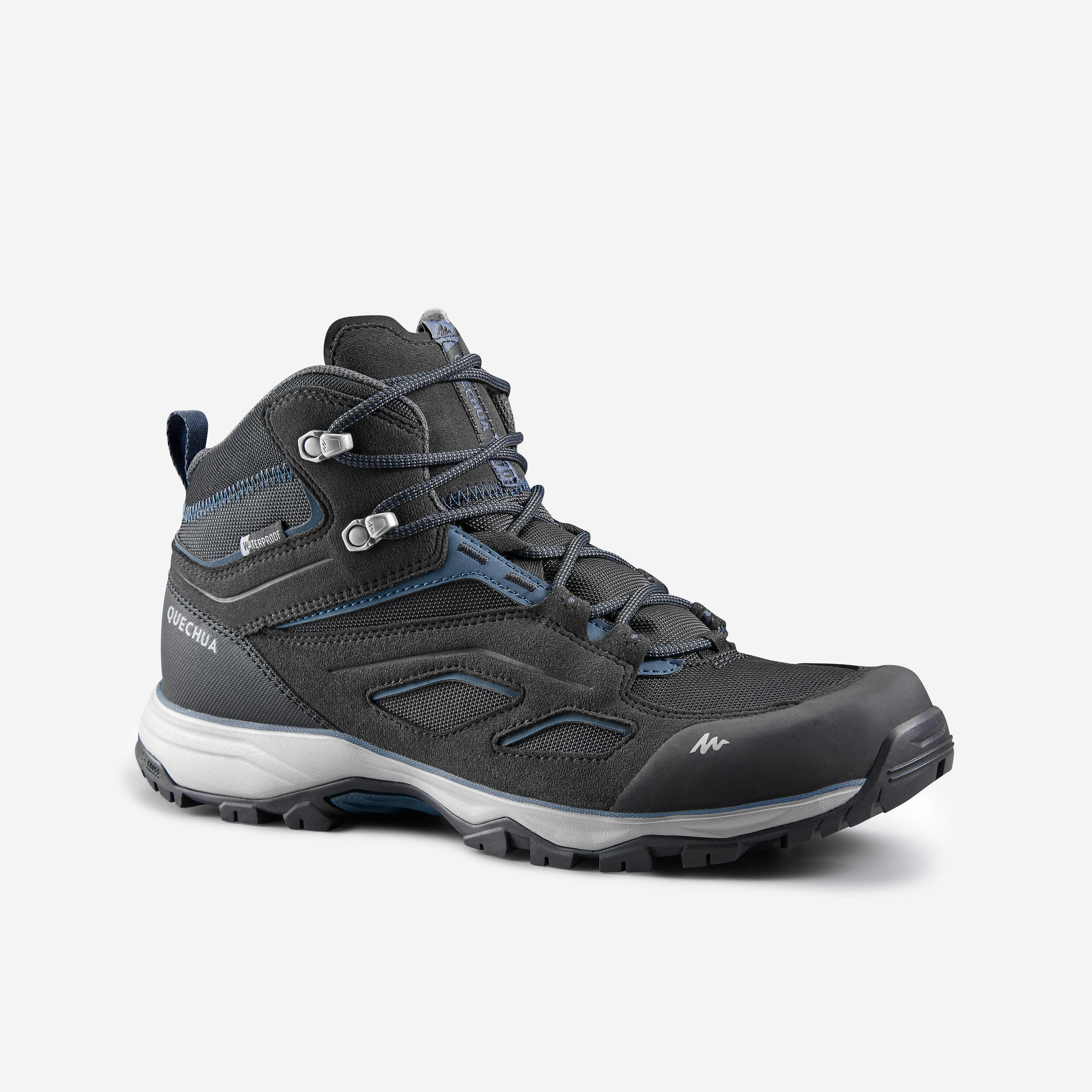





quechua
Men's Waterproof Hiking Shoes - MH 100 Black
$85.00
These shoes were designed for occasional hikes. They’re essential for enjoying the mountains. These hiking shoes have everything you need for the mountains: excellent grip sole, good fit, protective stone guard at the front, and full cushioning.
4.3/5
(472 )
5
307
4
85
3
29
2
13
1
38
100%
Tue, Mar 05, 2024
Alexander
-
: 3 to 8 weeks
: [object Object]
Great affordable shoes for our very long trek
| Traction | 5 | |
| Waterproof | 5 | |
| Value for money | 5 | |
| Fit | 5 |
Thu, Apr 11, 2024
Rajesh
-
: 3 to 8 weeks
: [object Object]
Used these shoes in winter season in Russia. Very Helpful
| Waterproof | 5 | |
| Value for money | 5 | |
| Traction | 5 | |
| Fit | 5 |
Fri, Mar 08, 2024
Naba Kumar
-
: 2 week or less
: [object Object]
As well as good.
| Fit | 4 | |
| Value for money | 4 | |
| Traction | 4 | |
| Waterproof | 4 |
Thu, Mar 07, 2024
Krishna
-
: 8 to 12 months
: [object Object]
Good product.
| Waterproof | 4 | |
| Fit | 4 | |
| Value for money | 3 |
Thu, Mar 07, 2024
Amrit
-
: 4 to 6 months
: [object Object]
Excellent. Used these on my Patagonia trek, very comfortable and water proof
| Traction | 5 | |
| Waterproof | 5 | |
| Fit | 5 | |
| Value for money | 5 |
Tue, Mar 05, 2024
Good Product | Long Term Review
VIVEK
: More than 1 year
: [object Object]
Its almost a year since I purchased and been using it. I have used it for gaumukh himalayan treak and other small weekend treak(5-7 houra walk time). My Experience. This product durability is good, its sturdy. It very good to walk on long rocky surface. It saved a number of t
ime from ankle twist. I have walked wearing it in streams and feet was not wet at all. So overall experience is good. Issues I faced. As this is a waterproof shoe so it was not ventilated and was causing sweat a lot. I do not get sweat generally while wearing shoes in daily life. But in this it was so sweaty that I had to change my socks every few hours. And due to which I got blisters on my toes(shoe size was 1 size bigger that my regular size as recommended by decathlon and treakers). This is problem I faced. Improvement. Decathlon should launch a socks or any power or improvemnet in shoe itself for preventing sweat in feet. It was irritating for me and had to change my socks every few hours and let my feet get fresh air.
...Mon, Mar 04, 2024
Shoe
Ragu A/l Kuppusamy
-
: 3 to 8 weeks
: [object Object]
Good service keep it up
Arifin
Dear Ragu A/I Kuppusamy, thank you very much for your time in leaving us with a 5-Star rating on our Decathlon Puchong store. We are very grateful that we managed to delight you with the standards of our product as well as the services. We really appreciate your loyalty with D
ecathlon. Please let us know if there is anything else we can improve on in the future. Thank you once again for your time and we hope to serve you again soon! Arifin
...Mon, Feb 26, 2024
Hiking shoes that doesn't look like typical ones
Jay
: [object Object]
Very light. Grippy with nice pattern suitable for multiple terrains. Good looking. I wish these came in wider sizes for extended comfort(if it did, it would be 5 stars). Gets sweaty fast as it is waterproof.
Mon, Feb 26, 2024
Sheikh
-
: 3 to 8 weeks
: [object Object]
very good product
Fri, Feb 16, 2024
Ravi
-
: 8 to 12 months
: [object Object]
A good foot accessory for trekking, mountain climbing, crossing river etc. very easy on foot and comfortable. A definite five star rating for this waterproof shoe
| Traction | 5 | |
| Waterproof | 5 | |
| Fit | 5 | |
| Value for money | 5 |